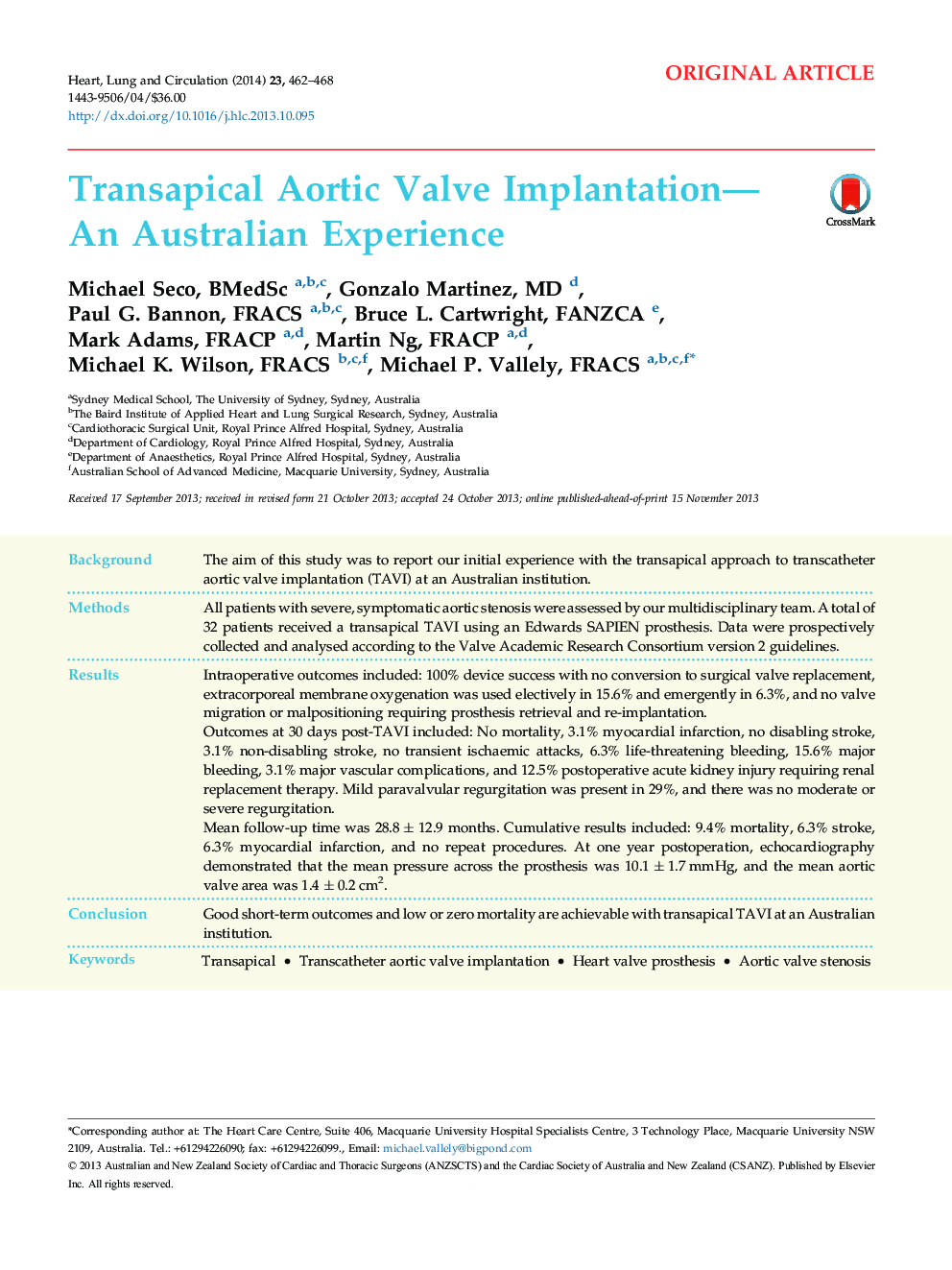| Article ID | Journal | Published Year | Pages | File Type |
|---|---|---|---|---|
| 2918220 | Heart, Lung and Circulation | 2014 | 7 Pages |
BackgroundThe aim of this study was to report our initial experience with the transapical approach to transcatheter aortic valve implantation (TAVI) at an Australian institution.MethodsAll patients with severe, symptomatic aortic stenosis were assessed by our multidisciplinary team. A total of 32 patients received a transapical TAVI using an Edwards SAPIEN prosthesis. Data were prospectively collected and analysed according to the Valve Academic Research Consortium version 2 guidelines.ResultsIntraoperative outcomes included: 100% device success with no conversion to surgical valve replacement, extracorporeal membrane oxygenation was used electively in 15.6% and emergently in 6.3%, and no valve migration or malpositioning requiring prosthesis retrieval and re-implantation.Outcomes at 30 days post-TAVI included: No mortality, 3.1% myocardial infarction, no disabling stroke, 3.1% non-disabling stroke, no transient ischaemic attacks, 6.3% life-threatening bleeding, 15.6% major bleeding, 3.1% major vascular complications, and 12.5% postoperative acute kidney injury requiring renal replacement therapy. Mild paravalvular regurgitation was present in 29%, and there was no moderate or severe regurgitation.Mean follow-up time was 28.8 ± 12.9 months. Cumulative results included: 9.4% mortality, 6.3% stroke, 6.3% myocardial infarction, and no repeat procedures. At one year postoperation, echocardiography demonstrated that the mean pressure across the prosthesis was 10.1 ± 1.7 mmHg, and the mean aortic valve area was 1.4 ± 0.2 cm2.ConclusionGood short-term outcomes and low or zero mortality are achievable with transapical TAVI at an Australian institution.
